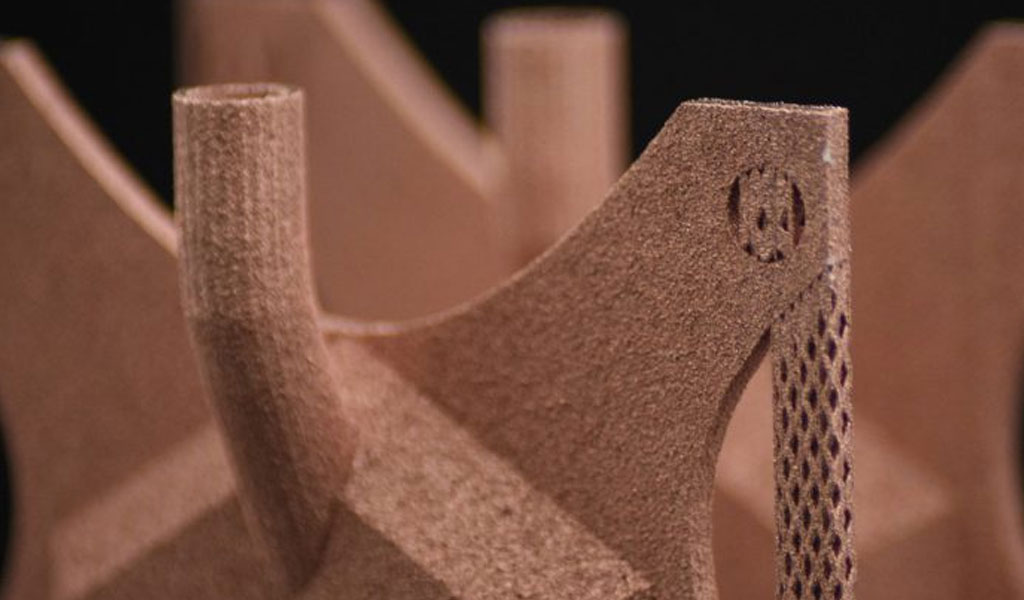
Because copper has good thermal conductivity, it is often used to make heat dissipation and cooling components. 3D printing can achieve complex geometric shapes and improve the efficiency of heat dissipation and cooling components. Therefore, in theory, 3D printed bronze and copper cooling components would be very efficient.
However, copper is a difficult material to 3D print because of its high reflectivity and good thermal conductivity. However, with the advancement of 3D printing technology, there are now several 3D printing processes that can use copper well for 3D printing. At the 2021 3D printing exhibition Formnext, Alloyed demonstrated a 3D printed copper cooling plate.
In order to give full play to the role of 3D printing, Alloyed has developed a set of advanced product design software that can not only design parts with complex geometric structures, but also select the most appropriate 3D printing process and alloy materials through algorithms. This enables faster and more cost-effective delivery of better-functioning parts for a variety of applications
It is understood that this cooling plate is specially used in data centers and is a liquid cooling system. Due to its complex geometric structure, it has better performance in terms of heat exchange and liquid pressure drop, and the cooling efficiency is also higher. Moreover, the 3D printed one-piece structure reduces assembly requirements and is easier to maintain.
Currently, in addition to process improvements, some material manufacturers are also researching new copper powders to adapt to the current mainstream SLM 3D printers.
